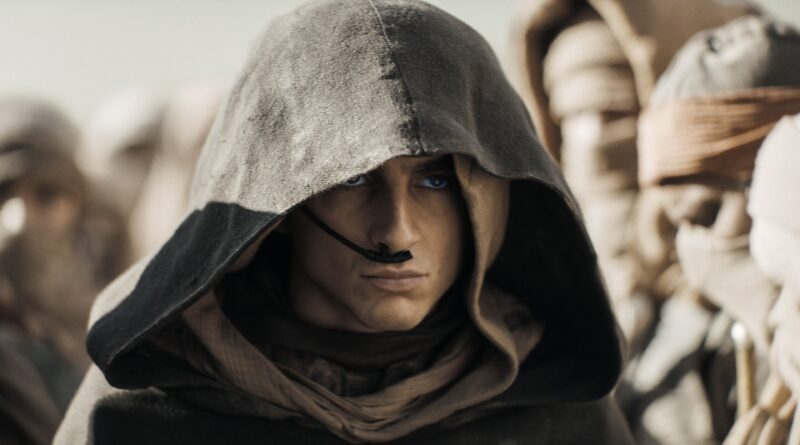‘Dune: Part Two’ ending explained: What comes next for Paul and Chani?

After the tremendous three hours of spice, sandworms, and Sardaukar that is Dune: Part Two, you may find yourself with some questions. Given the film’s cataclysmic ending, your biggest one might just be, “What in the world comes next?” Or, “When will director Denis Villeneuve start shooting a third Dune movie, because I need it pronto?”
Unlike Paul Atreides (Timothée Chalamet), I cannot see through the storms of time and give you any foresight on the timeline of Villeneuve’s next moves. (Although he has said in an interview with The Hollywood Reporter that the script for a third Dune is almost done.) As Mashable’s resident Dune-head, what I can do is offer up some insight as to why Paul goes full space despot, clarify any of the more granular questions you may have, and dig into what we can expect from an adaptation of Frank Herbert’s Dune Messiah.
From Paul’s fight against Feyd-Rautha Harkonnen (Austin Butler) to Chani’s (Zendaya) game-changing final decision, let’s get into the ending of Dune: Part Two.
Paul embraces the role of Lisan al-Gaib.
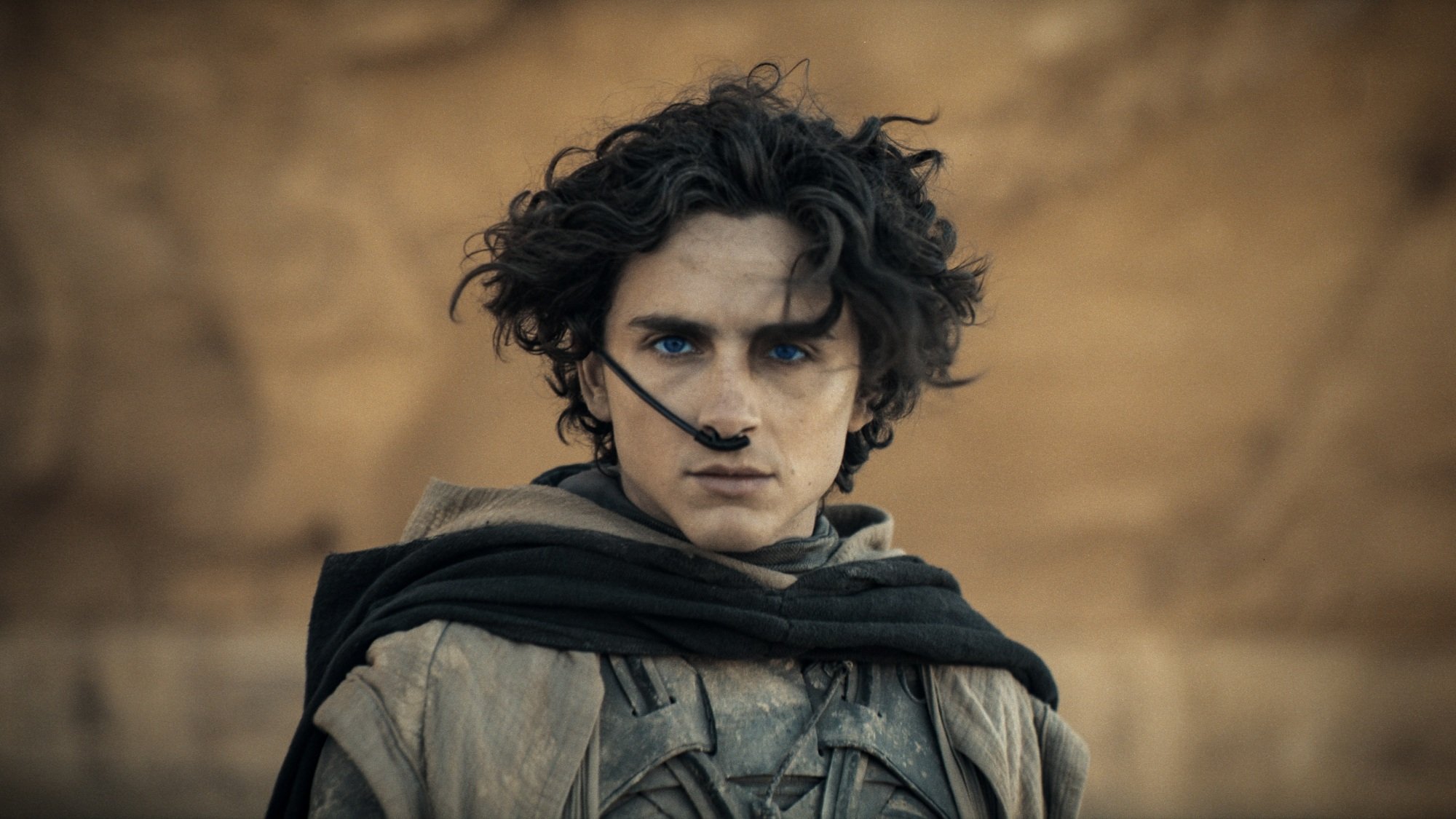
The Bene Gesserit propaganda about the Lisan al-Gaib, a messianic figure who will free the Fremen, haunts Paul throughout Dune: Part Two. If he takes on the title, he could have a better chance at getting revenge on Emperor Shaddam Corrino IV (Christopher Walken) for sanctioning the attack that destroyed House Atreides. Yet he would also be taking control of Arrakis’s indigenous Fremen people, betraying Chani, and kickstarting the holy war he sees in his visions of the future. Due to these visions, Paul spends most of the film fearing his new worshippers and fighting against the inevitable. He knows that if he goes to the south of Arrakis and meets the fundamentalist Fremen living there (a new addition by Villeneuve and co-writer Jon Spaihts), there will be no stopping the oncoming jihad.
However, the arrival of the brutal Feyd-Rautha on Arrakis proves catastrophic for the Northern Fremen. When Feyd’s forces destroy Sietch Tabr, Paul realizes that victory will only come if he strengthens his prescience. To do that, he must go south and drink the Water of Life — the spice-rich bile of a drowned baby sandworm — that only Reverend Mothers can drink. Upon doing so, he discovers that his mother Jessica (Rebecca Ferguson) is the daughter of Baron Vladimir Harkonnen (Stellan Skarsgård), meaning that he shares blood with the mortal enemy of House Atreides. The revelation unlocks a narrow path forward for Paul to triumph over the encroaching Harkonnens and Imperial forces. But as he tells Jessica, the way they win will be by being Harkonnens — in other words, by being monsters themselves.
So, at a meeting of the Fremen leaders, Paul does the monstrous thing he’d always feared and claims the title of Lisan al-Gaib. By doing so, he asserts his dominance over the entire Fremen population and prepares to use them in one last stand against the Emperor and the Harkonnens.
Paul and the Fremen fight the Harkonnens and Imperial Sardaukar for Arrakis.
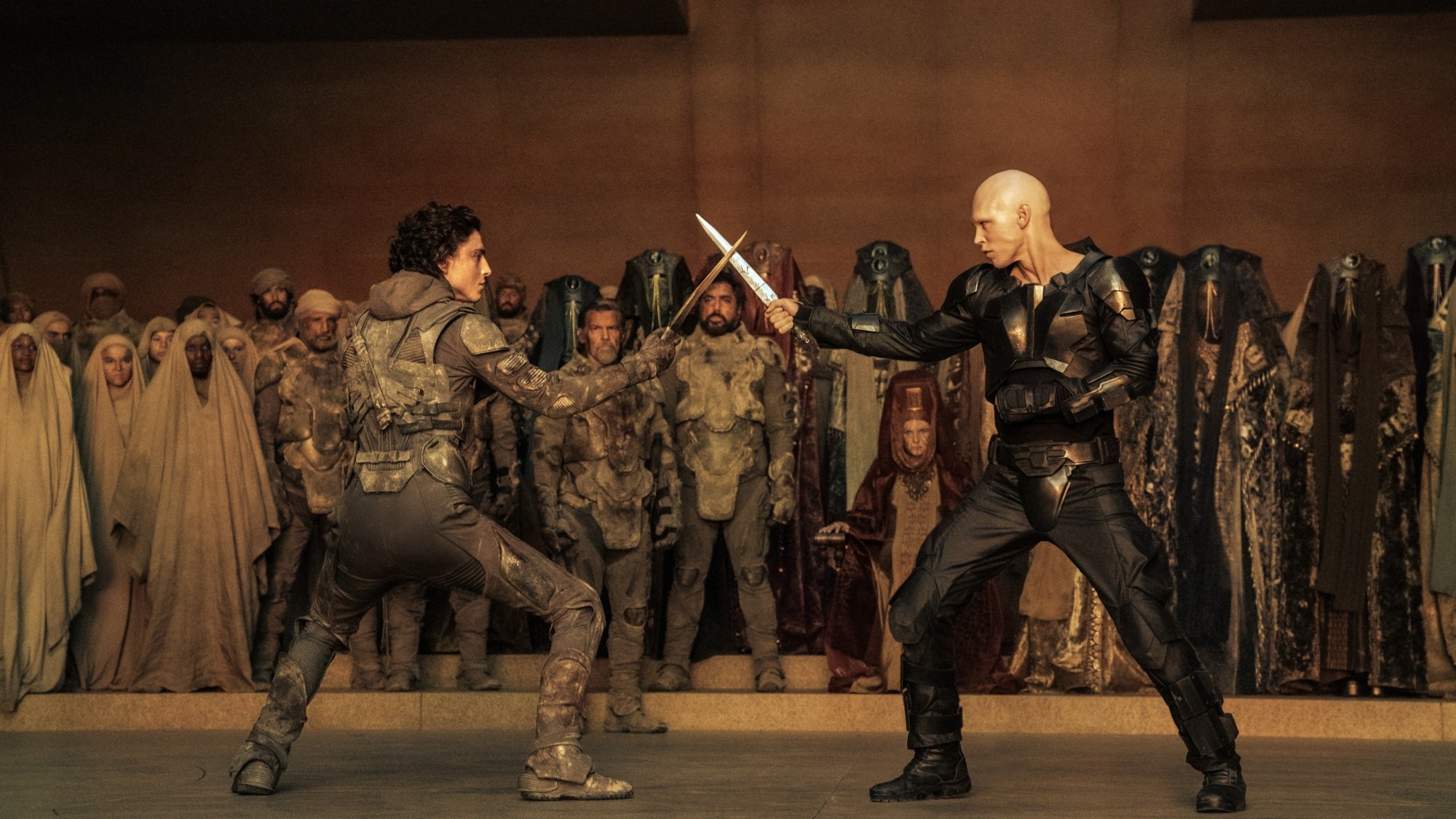
Emperor Shaddam IV and his daughter Princess Irulan (Florence Pugh) arrive on Arrakis to answer Paul’s play for the throne (and to to scold the Harkonnens for mucking up spice production). Thanks to a massive storm, the Atreides family atomics, and the might of sandworms, Paul and his Fremen forces make easy work of the Harkonnens and the Emperor’s Sardaukar soldiers. In the fight, Paul kills Baron Harkonnen, while Gurney Halleck (Josh Brolin) takes down Rabban Harkonnen (Dave Bautista).
But Paul isn’t just fighting for control of Arrakis. He wants the Emperor to face consequences for his attempts to stamp out House Atreides. He challenges the Emperor for the throne, and Feyd steps up to be Shaddam’s champion. The two face off in a knife duel to the death — called Kanly in the books — which Paul narrowly wins. In beating the Emperor’s champion, he also beats the Emperor, therefore allowing him to take his place.
What’s next for the Harkonnens and the Emperor?
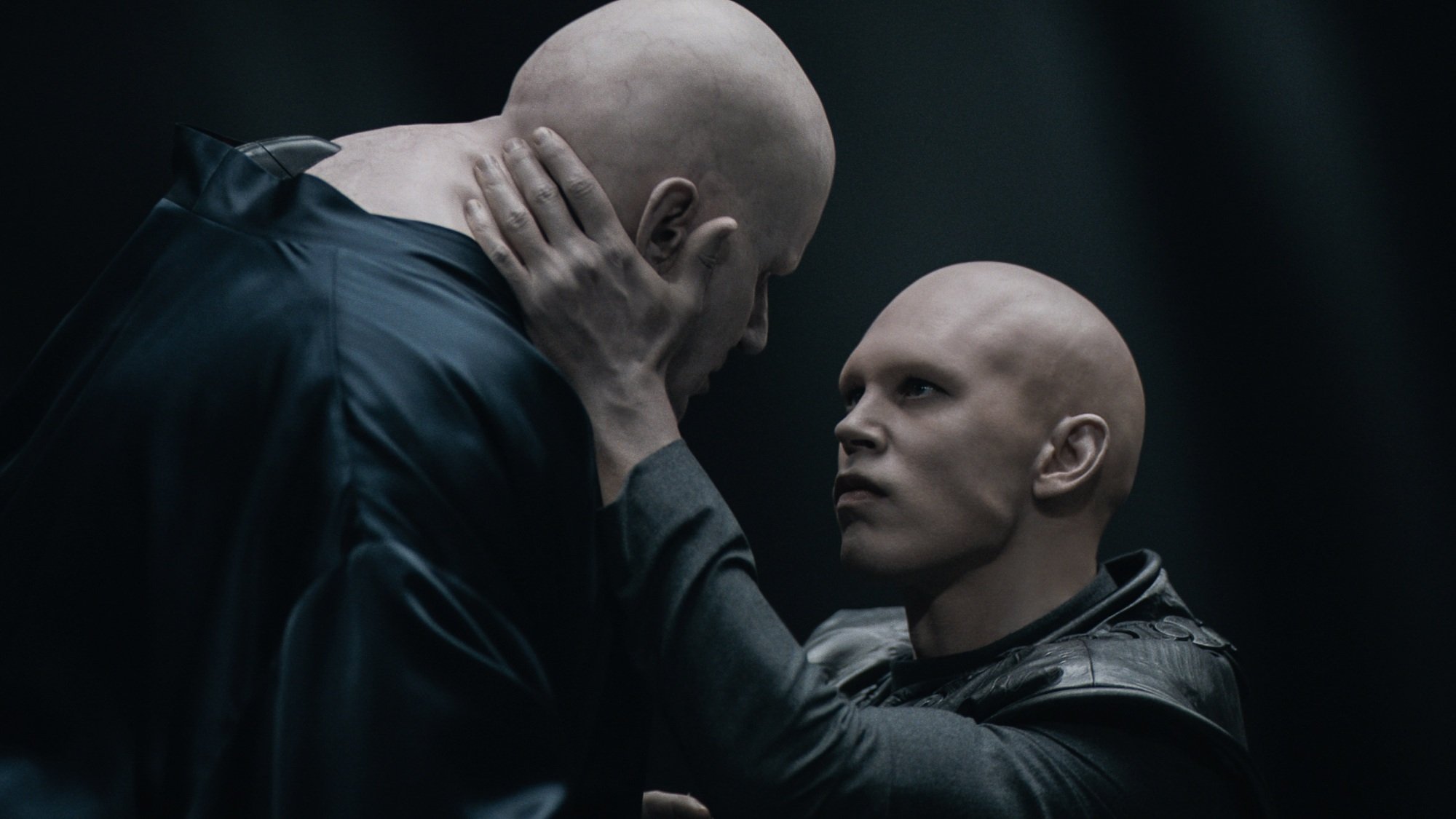
Feyd’s death marks the end of House Harkonnen as we know it, but the bloodline is preserved by Marie, Feyd’s child with Lady Margot Fenring (Léa Seydoux) who is yet to be born. However, since she only appears in Brian Herbert and Kevin J. Anderson’s novel Paul of Dune, don’t expect to see her pop up in Dune Messiah anytime soon. The Harkonnens, with all their bald, freaky villainy, are gone.
Don’t think for a second that the good guys have won, though. At this point, Paul is as far from a hero as they come. He takes Princess Irulan as his wife and forces the Emperor to kiss his ring — with a bratty stomp to boot! Despite his show of power, the other Great Houses of the Landsraad aren’t happy about Paul’s rise. They refuse to accept Paul’s ascendancy, at which point Paul utters four chilling words: “Send them to paradise.” Essentially, kill them all. The holy war Paul avoided for months finally begins in earnest.
Paul’s command to the zealous Fremen is actually a new addition by Villeneuve and Spaihts. In Herbert’s work, the jihad begins in the years between Dune and Dune Messiah, unseen by the reader. Here, the choice to have Paul explicitly declare the war himself emphasizes his turn towards exploiting the Fremen and oppressing the Imperium. It’s only a shade of what’s to come, but it’s horrific enough that Chani leaves him and the Fremen and sets outs on her own.
Where is Chani going?
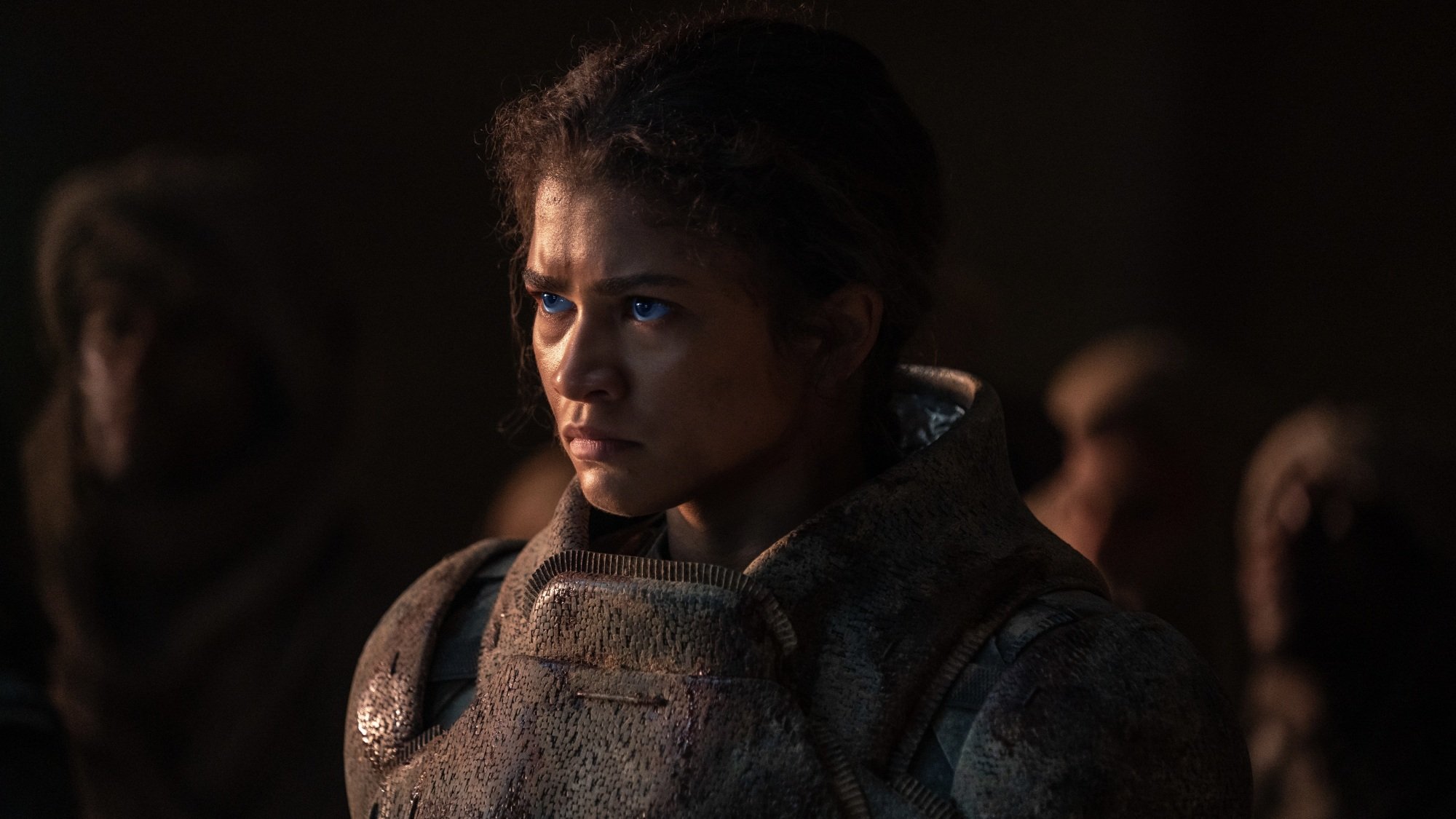
The final shot of Dune: Part Two is not one of Paul embracing his new power, but rather of a furious, determined Chani preparing to ride a sandworm off into the desert, away from Paul and his conquering forces. Her departure marks a major shift from the original Dune, where she stood by Paul’s side through thick and thin.
Even though this ending might be a surprise for book fans, Dune: Part Two does hint at Chani’s new path throughout. She’s more defiant of Paul and more skeptical of the Lisan al-Gaib prophecy, but that doesn’t stop her from loving him. Perhaps most telling is a line shared between them in a romantic moment: “You will never lose me, Paul Atreides,” Chani says. “Not as long as you remain who you are.” Of course, by the end of Dune: Part Two, Paul is no longer the Paul Atreides Chani came to know and love. He’s the Lisan al-Gaib, the Kwisatz Haderach, and her people’s newest oppressor. There’s nothing for Chani but anguish if she stays with him.
So, where is she going now? Again, in Herbert’s work she stays with Paul throughout, so this is a new twist from Villeneuve and Spaihts. Maybe she’ll stay true to her warrior roots and work to fight against Paul. However, since he’s amplified his prescience, and since he has all the Fremen at his back, it will be the most uphill of uphill battles. Could Chani muster up a resistance force of her own?
What’s next for Dune?
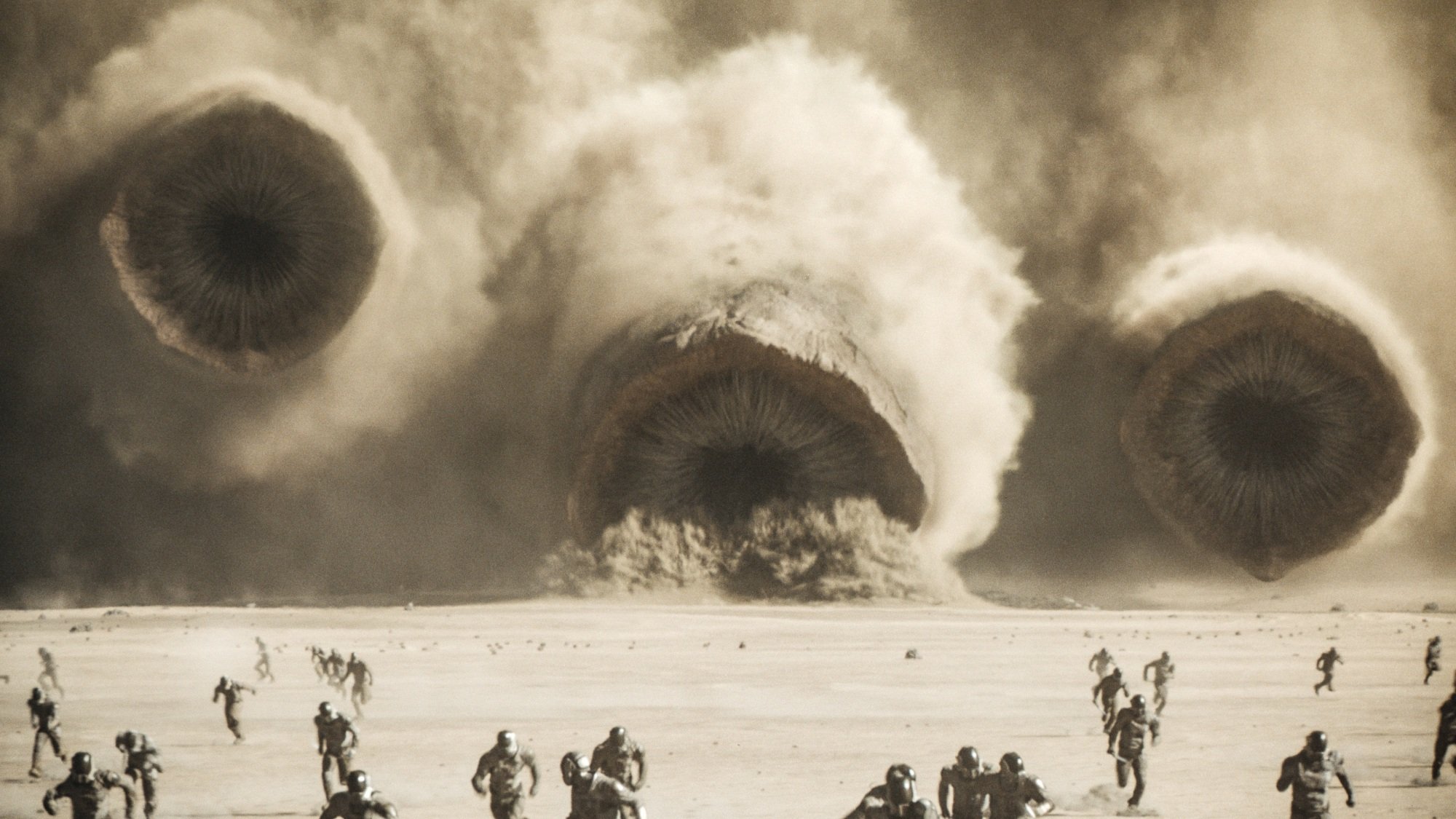
Chani leaving Paul is the biggest switch between Herbert’s books and Villeneuve’s films, yet it helps underscore Paul’s brutal betrayal of the friends — now followers — he’d made on Arrakis. Other than this shift, most of the pieces are in place for Dune Messiah, the second book in the Dune series and the film Villeneuve has proposed as concluding his Dune trilogy. Without getting too deep into spoilers, here’s what you can expect from the rest of Paul’s story.
Dune Messiah picks up 12 years after Paul becomes Emperor. The jihad rages on, the Fremen have conquered much of the universe in Paul’s name, and 61 billion people are dead. Paul attempts to use his powers to steer humanity down the path of least destruction, but there are forces at play against him. The Bene Gesserit have crafted a plot to dethrone him, one that includes the involvement of Princess Irulan. (If you’re annoyed we didn’t get much Pugh in this movie, you’ll be happy to know she’s a major player going forward.) Herbert introduces a new society in the Tleilaxu as well, whose genetic manipulation more or less resurrects a character we lost in the first Dune.
Paul’s sister Alia Atreides (Anya Taylor-Joy) also plays a much larger role in Dune Messiah, especially considering how little we see of her in Dune: Part Two. Thanks to Jessica drinking the Water of Life while pregnant, Alia has all the capabilities of a fully trained Bene Gesserit Reverend Mother, making her a valuable asset to Paul in his attempts to remain in power.
Then there’s the matter of Chani. She and Paul are still very much together in Dune Messiah, even though he’s married to Princess Irulan. Their relationship, and Paul’s attempts to protect her from harm, are at the heart of the novel. Yet their separation at the end of Dune: Part Two complicates this aspect of the story, and could have bigger consequences down the line, adaptation-wise.
Paul does tell Jessica that he’s foreseen Chani coming to understand his decisions, so there’s a chance they’ll reconcile in Villeneuve’s take on Dune Messiah. But since Paul’s prescience isn’t always accurate, is this vision certain to come to pass? Can Chani really forgive Paul after everything he’s done? Or will Villeneuve depart further from Herbert’s work when it comes to Chani’s fate? We won’t get the answers to these questions until the release of a potential Dune Messiah, so to that I say: “Let the sequels flow.”
